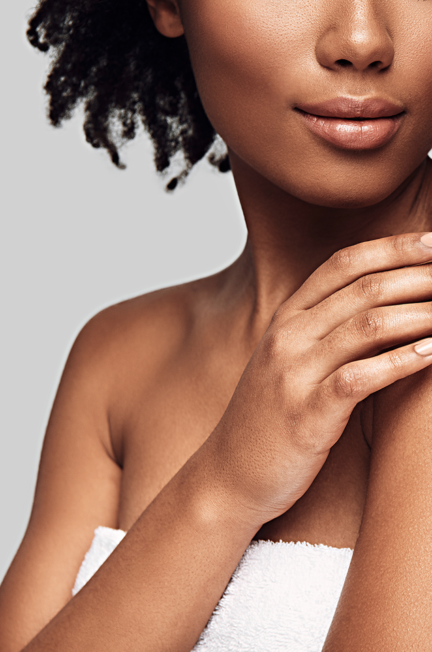Introduction
Armpit rashes, though common, can be uncomfortable and bothersome. In this comprehensive guide, we’ll explore the meaning, causes, treatment options, prevention strategies, and address frequently asked questions about armpit rashes. All the information provided here is well-researched and sourced from reliable references, ensuring that you have a trustworthy resource at your fingertips.
Meaning of Armpit Rashes
An armpit rash, also known as axillary dermatitis or underarm rash, refers to the redness, irritation, and inflammation that can occur in the skin of the armpit area. It can be caused by a variety of factors, and understanding the underlying cause is essential for effective treatment.
10 Common Causes of Armpit Rashes
- Friction: Skin-to-skin friction or friction from clothing, especially tight or rough fabrics, can lead to irritation.
- Heat and Sweat: Excessive sweating in hot and humid conditions creates an ideal environment for rashes to develop.
- Deodorants and Antiperspirants: Some ingredients in these products, such as fragrances or alcohol, can irritate the skin.
- Allergies: Allergic reactions to fabrics, laundry detergents, or skincare products can cause rashes.
- Fungal Infections: Fungi, particularly Candida, thrive in warm, moist environments, making the armpits susceptible to infections.
- Bacterial Infections: Bacterial overgrowth, often due to poor hygiene, can result in painful rashes.
- Contact Dermatitis: Skin reactions to allergens or irritants like poison ivy or nickel can lead to rashes.
- Eczema: Atopic dermatitis, a type of eczema, can affect the armpits, causing redness, itching, and inflammation.
- Psoriasis: Psoriasis plaques can develop in the armpits, characterized by silvery scales and red patches.
- Hidradenitis Suppurativa: A chronic skin condition that causes inflamed, painful bumps in the armpit area.
Treatment Options for Armpit Rashes
Effective treatment depends on the underlying cause:
- Keep the Area Clean and Dry: Gently wash the affected area with mild soap and water, and pat it dry. Avoid harsh scrubbing.
- Avoid Irritants: Identify and eliminate potential irritants, such as certain fabrics or skincare products.
- Topical Creams: Over-the-counter creams containing hydrocortisone can help reduce inflammation and itching.
- Antifungal Medications: If a fungal infection is suspected, antifungal creams or powders may be necessary.
- Prescription Medications: For severe or persistent rashes, a dermatologist may prescribe stronger medications or topical steroids.
Prevention Strategies
Preventing armpit rashes involves simple yet effective strategies:
- Choose Breathable Fabrics: Opt for natural, breathable fabrics like cotton to reduce friction and irritation.
- Practice Good Hygiene: Regularly wash and thoroughly dry your armpits, especially after sweating.
- Avoid Fragrance and Alcohol: Choose fragrance-free and alcohol-free deodorants and antiperspirants to reduce skin irritation.
- Allergy Testing: If you suspect allergies are the cause, consider allergy testing to identify specific triggers.
FAQs About Armpit Rashes
Let’s address some common questions and concerns about armpit rashes:
Frequently Asked Questions (FAQs) About Armpit Rashes
Q1: Can armpit rashes spread to other areas of the body?
A1: Yes, some rashes, like fungal infections or contact dermatitis, can spread if left untreated.
Q2: Is it safe to continue using deodorant or antiperspirant when I have an armpit rash?
A2: It’s advisable to switch to hypoallergenic, fragrance-free products until the rash heals.
Q3: Can certain fabrics worsen armpit rashes?
A3: Yes, fabrics like wool or synthetic materials can exacerbate rashes. Opt for breathable cotton clothing.
Q4: What is the best way to keep the armpit area clean and dry?
A4: Gently wash with mild soap and water, then pat dry. Avoid vigorous scrubbing.
Q5: Are over-the-counter creams effective for armpit rashes?
A5: For mild rashes, over-the-counter hydrocortisone creams can provide relief. You must seek a medical advice in case of persistent or severe rashes.
Q6: Can stress contribute to armpit rashes?
A6: Stress can weaken the immune system and potentially trigger or worsen skin conditions, including rashes.
Q7: Are there specific dietary changes that can help prevent armpit rashes?
A7: A balanced diet with adequate hydration can support overall skin health, but there are no specific foods that guarantee prevention.
Q8: Can armpit rashes be a sign of an underlying medical condition?
A8: In some cases, persistent or recurrent rashes may indicate underlying conditions like eczema or psoriasis.
Q9: How long does it typically take for an armpit rash to heal?
A9: The healing time varies based on the cause and severity of the rash. Mild rashes may improve within days, while others may take weeks.
Q10: When should I seek medical attention for an armpit rash?
A10: Consult a healthcare provider if the rash persists, worsens, or is accompanied by fever or pus-filled blisters.
Conclusion
Armpit rashes can be uncomfortable, but understanding their causes and following appropriate prevention and treatment measures can bring relief. If a rash persists or worsens, seeking medical advice is essential to identify and address any underlying issues.
Disclaimer: This blog post provides general information and the information provided here in the blog post should not replace professional medical advice. You should consult with a healthcare provider for personalized guidance on your specific situation.




